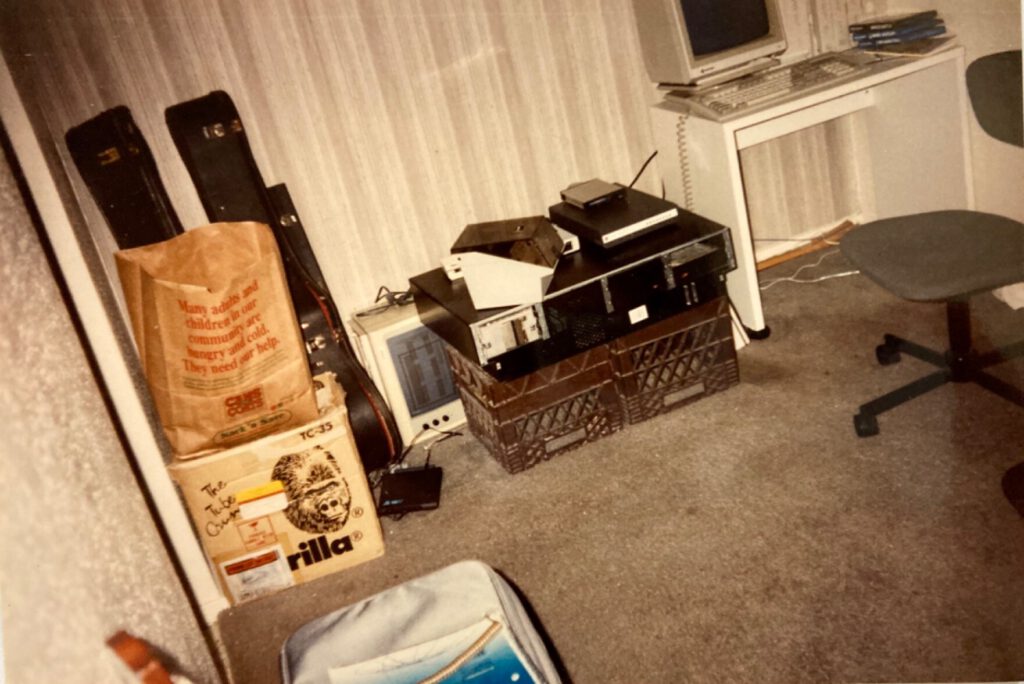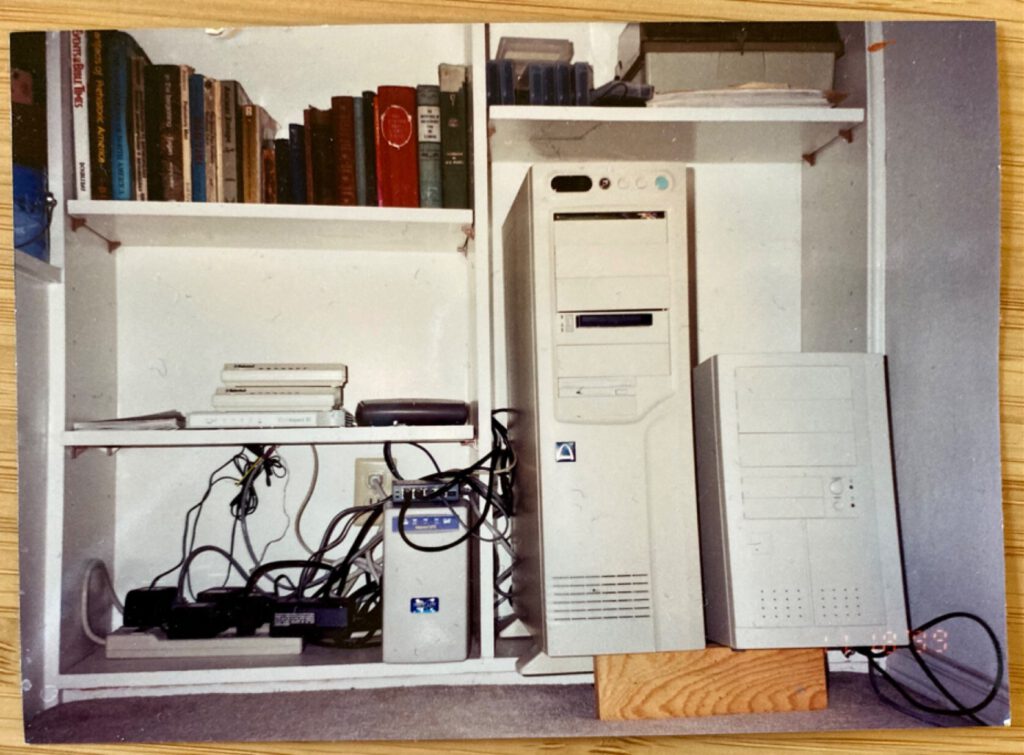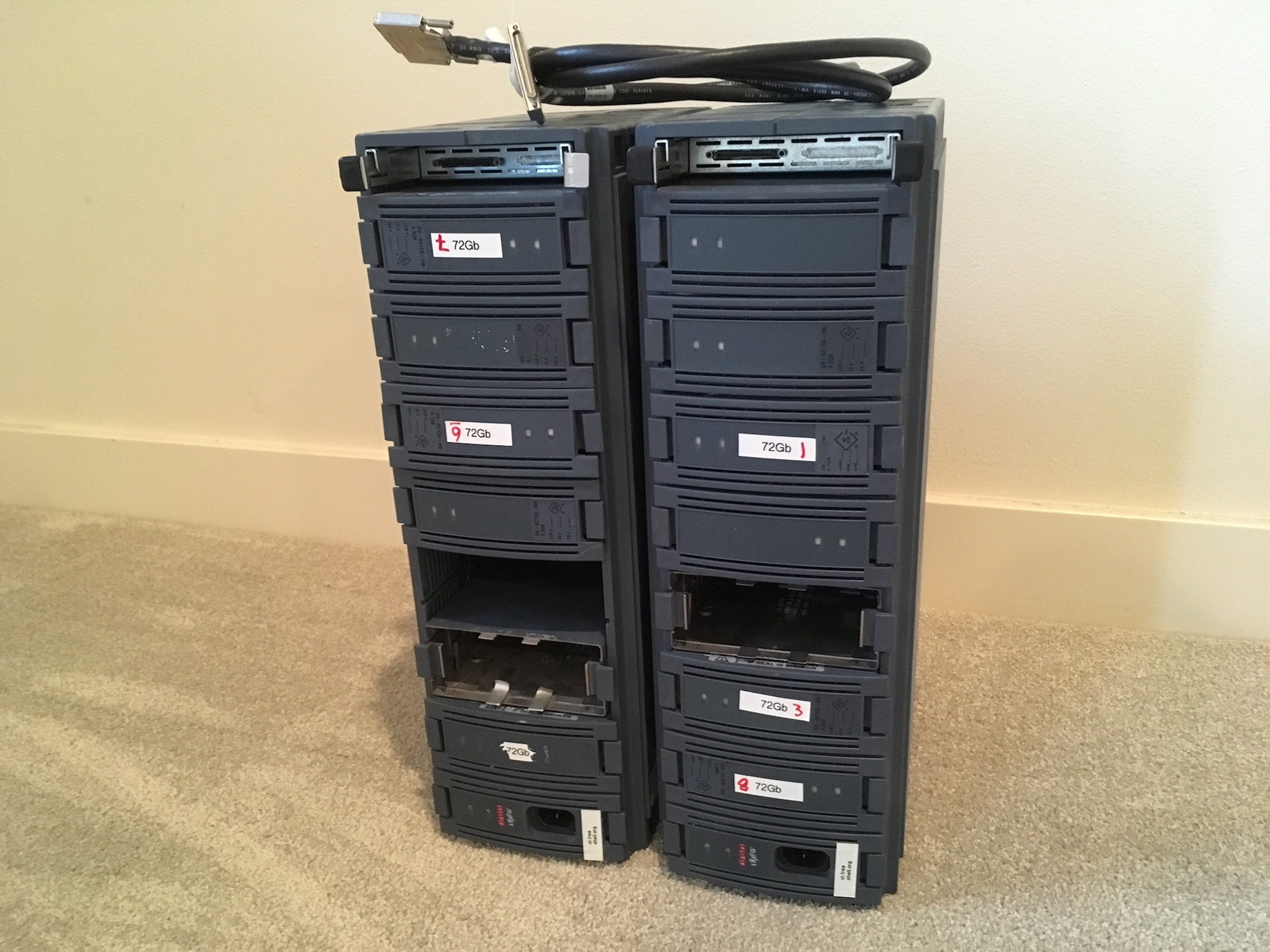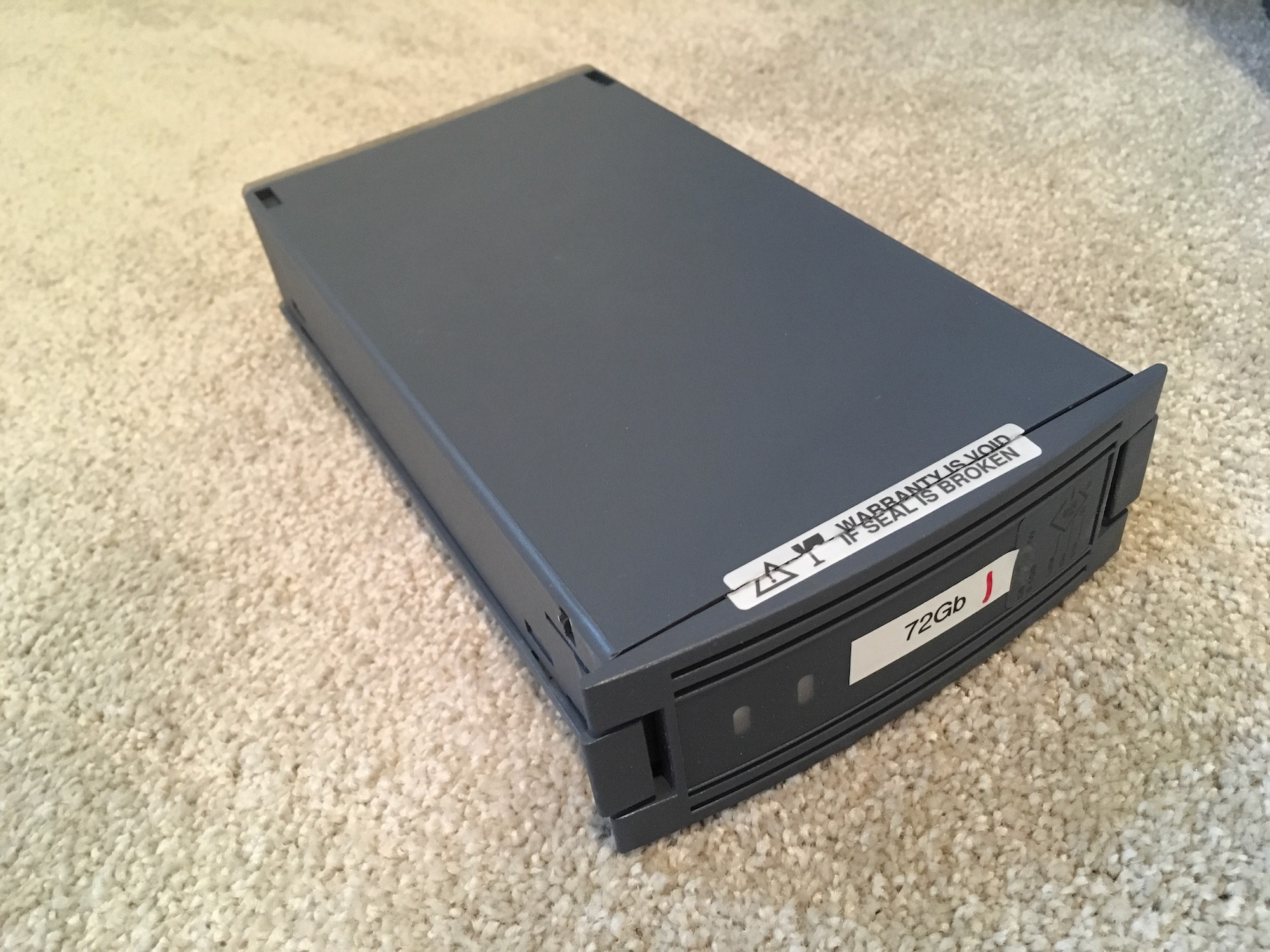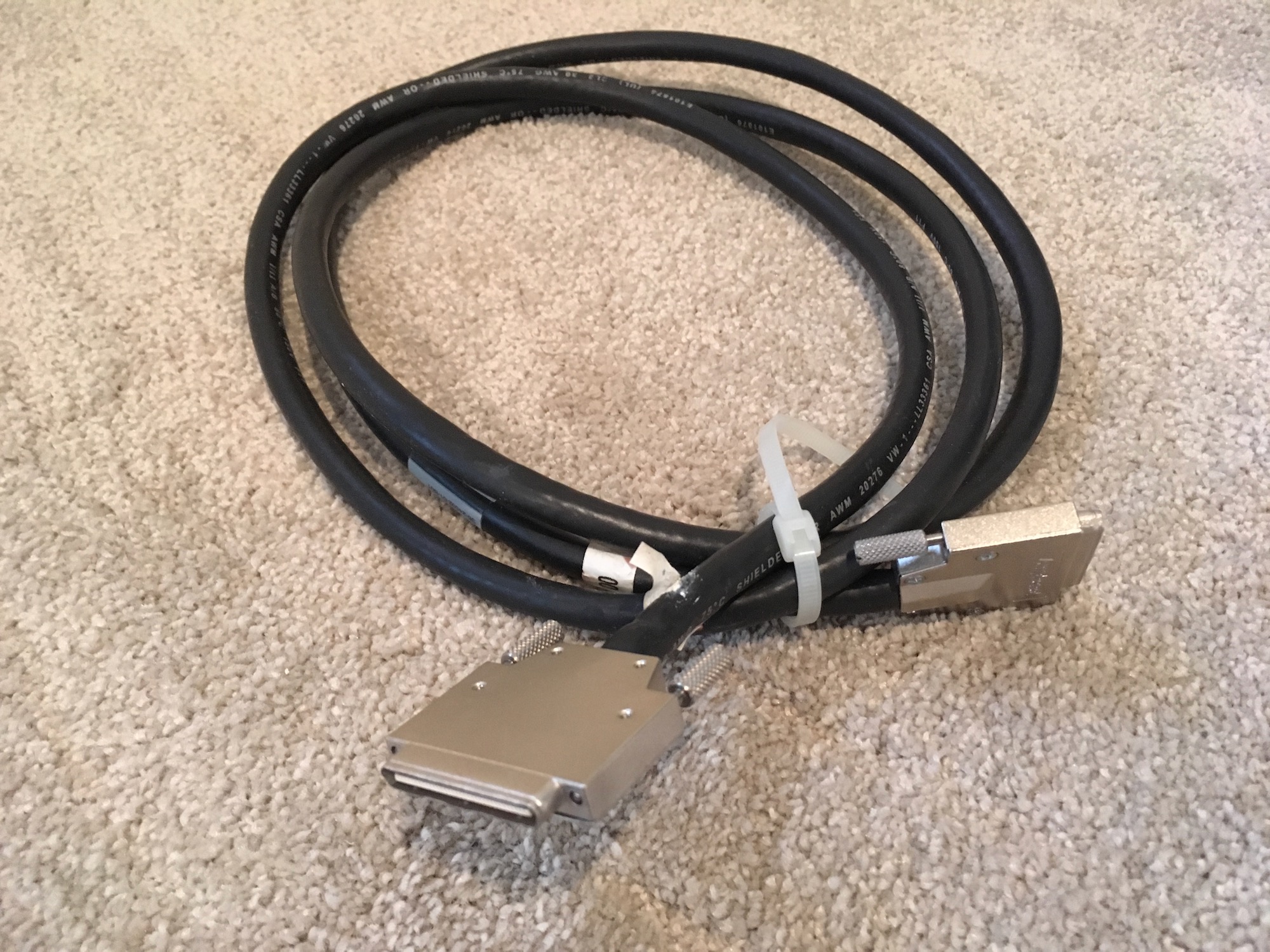
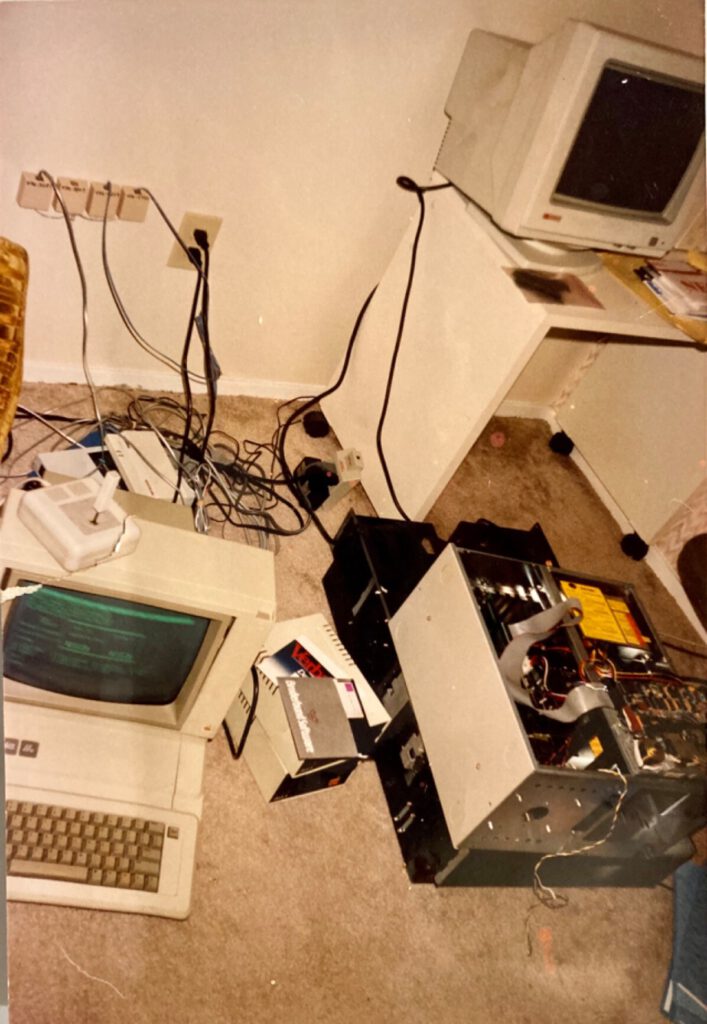
Summer in 1991 after a First Saturday Sale in which 8MB of RAM and an additional hard disk were purchased for SDF. On the left is the original SDF-1 Apple ][e running Magic City Micro BBS connected to (214)436-3281 to answer calls with a message regarding the “upgrade”. On the right is a 386 in a mid tower case and below that is an empty “server” case which was donated by Aaron Schmiedel (aaron). The contents of the 386, 5.25″ floppy drive, 40MB and 120MB MFM drives as well as the new 8MB of RAM and a 338MB ESDI disk and controller from Stephanie Linebarger (srl). The system at this time ran Kodak Interactive 386 UNIX (System Vr3.2). Dial up was provided with 4 lines in a rotary hunt group along with a separate line dedicated for UUCP. Hugin Sweda 212a, two 2400bps, a 9600bps and a 19.2kbps Trailblazer PEP modems (UUCP only).
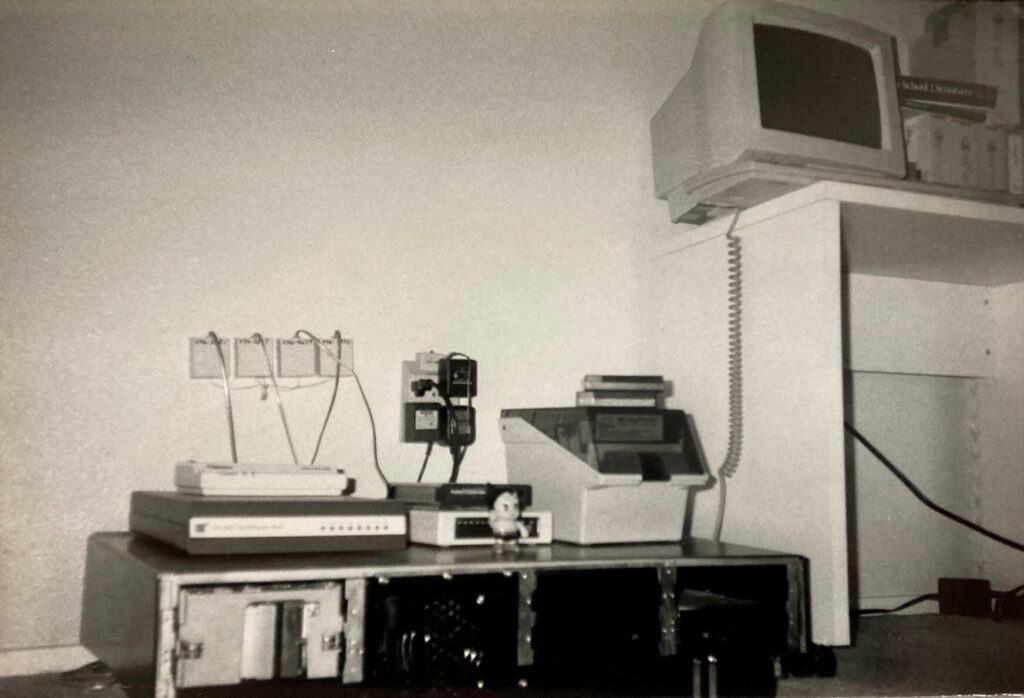
This is essentially what SDF looked like from mid 1991 through 1993. The Hugin Sweda 212a modem used in 1991 was no longer being in use and the fourth line was dedicated to the Telebit Trailblazer PEP modem for UUCP with a host of lonestar.org nodes such as letni (SMU), adaptex (Adaptec Corp), egsner (CIRR) and others.
AST 4 Port
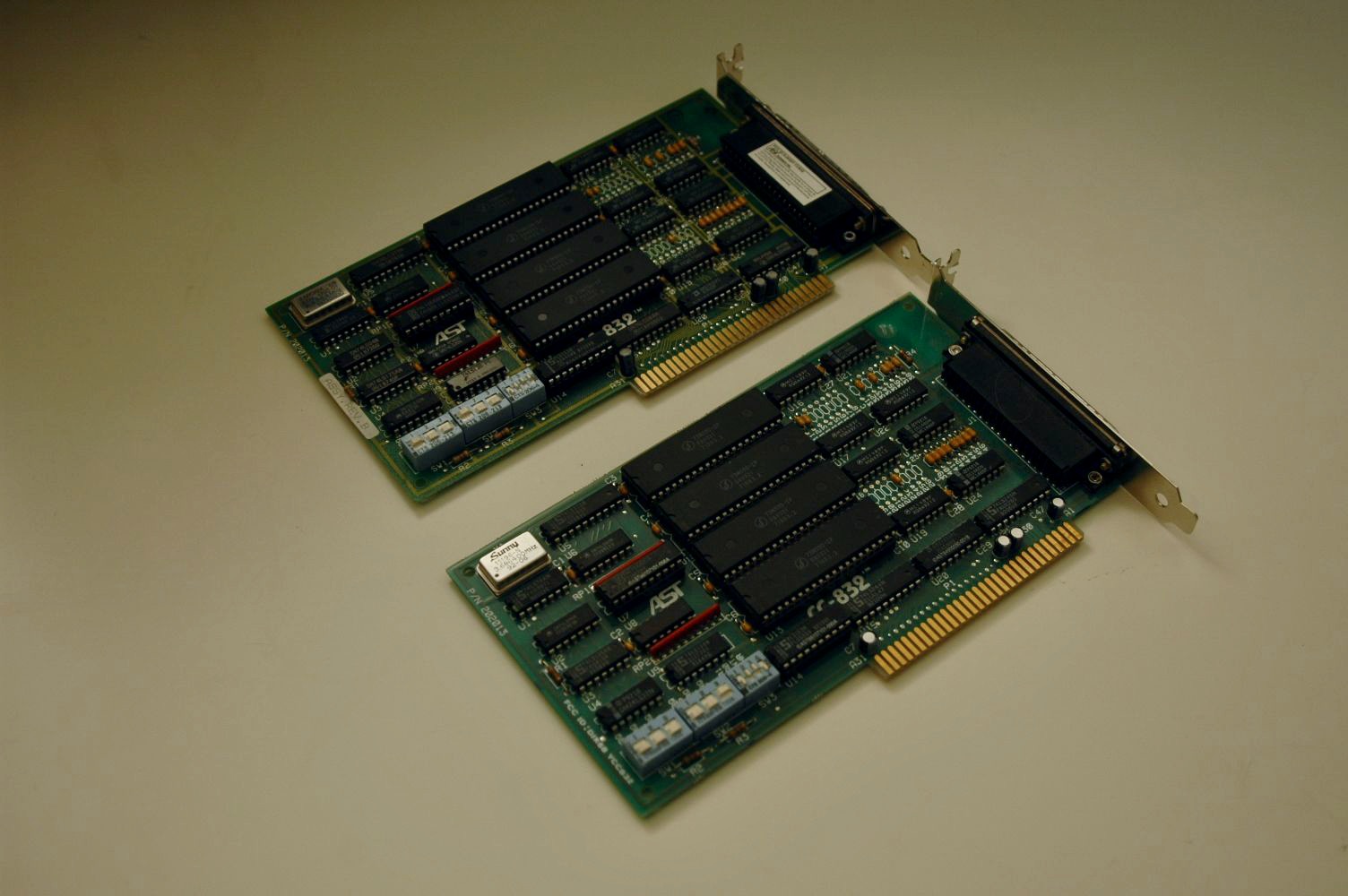


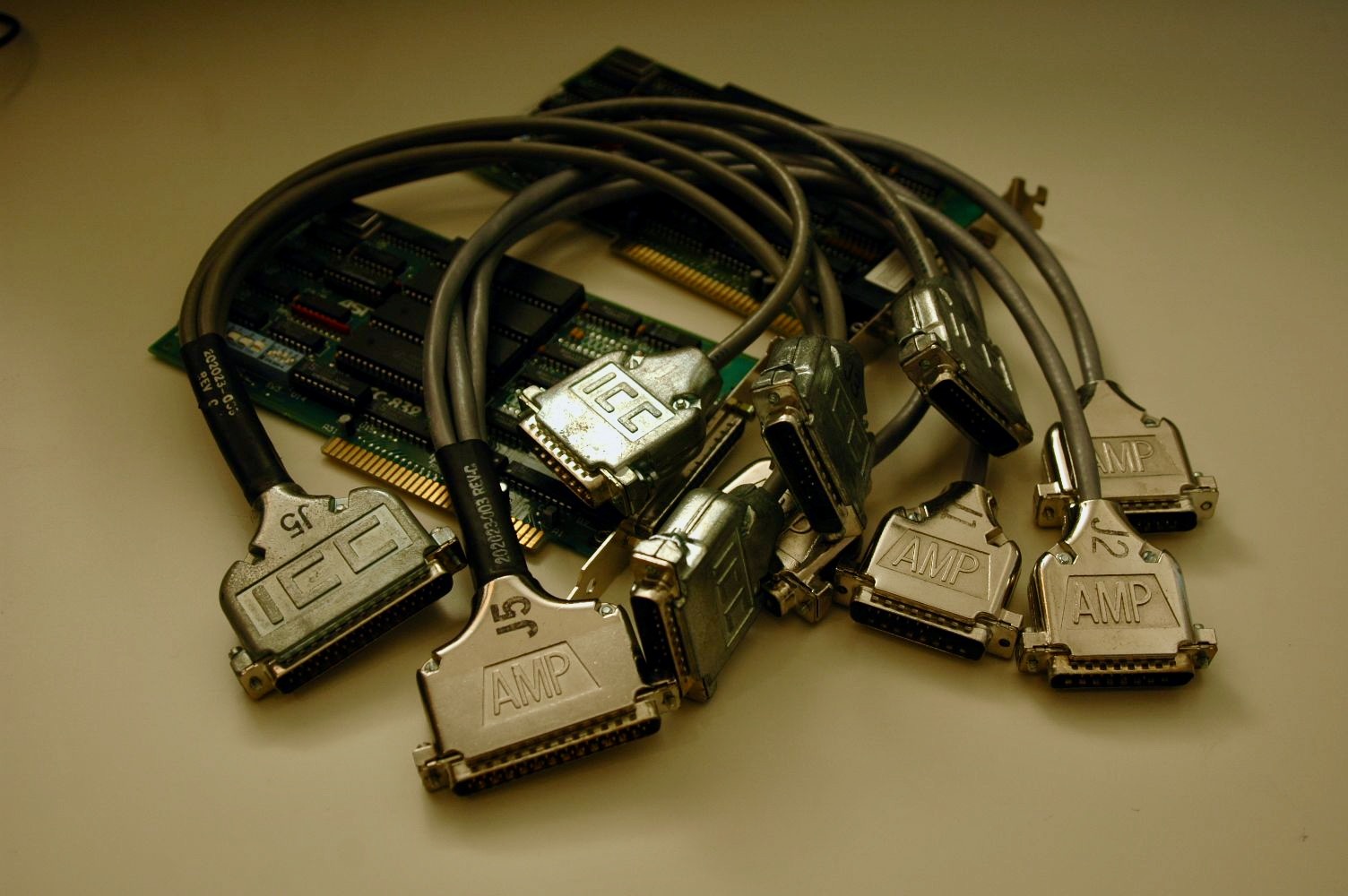
In 1991 SDF expanded to 4 dialups and made use of the AST 4 Port ISA adapter to allocate 4 serial ports to a single PC interrupt for ISC 386/ix UNIX using the FAS driver along with the standard 2 COM ports. In 1993 a second AST 4 Port was and the FAS driver was modified to support it. This allowed SDF to expand to a total of 10 dialup lines at the Sojourn, Addison Texas location.
1995-1998
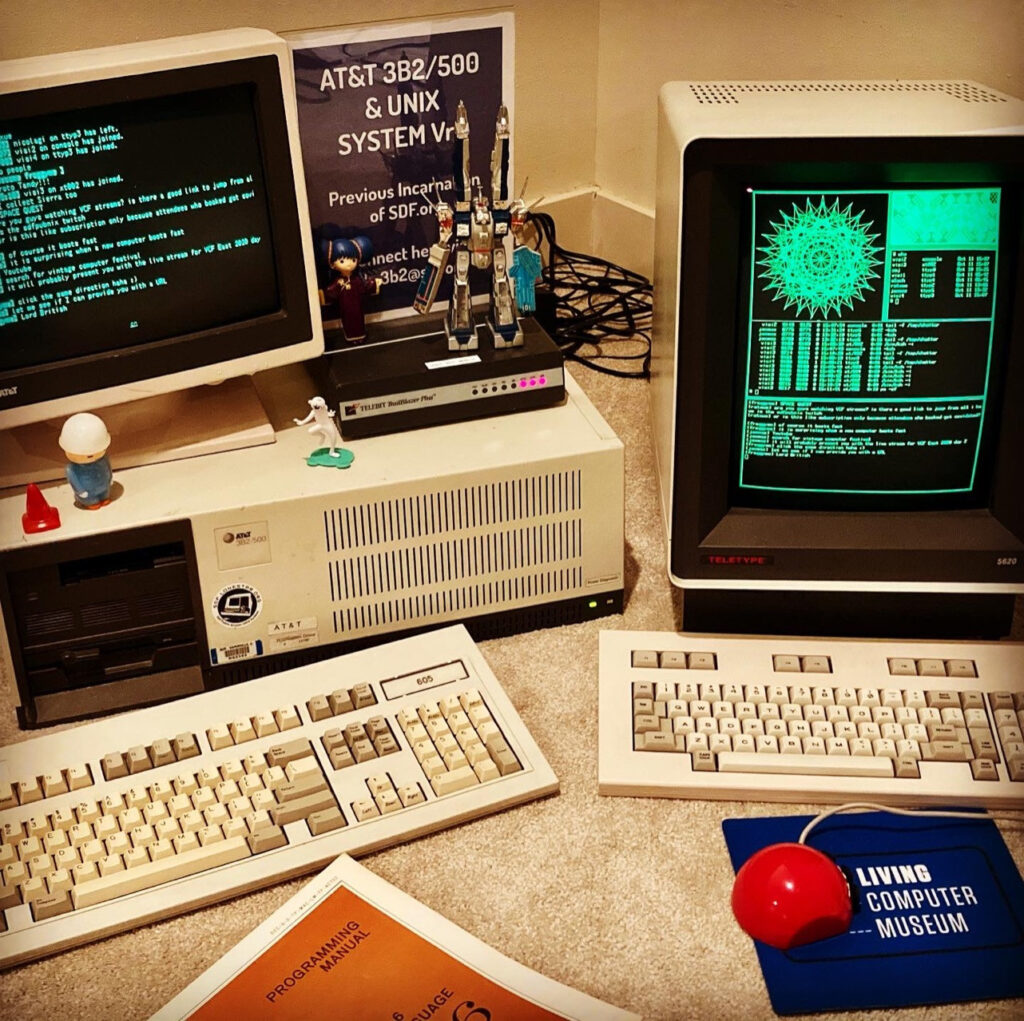
In 1995 Mike Dolan of Lucent arranged to have a 3B2/500 as part of a recycle program that AT&T initiated in the late 1980s into the 1990s. The program allowed non-profit and academic organizations to receive free AT&T 3B2 equipment that had been taken off lease or returned in the 3B2 upgrade program. During this time the Southwestern Bell Surplus store in Desoto Texas as also selling many 3B2 systems and terminals including TTY 5620 DMD BLIT terminals for $25-$50 a piece. In 1994 SDF received a few 3B2/400 systems, software, manuals and additional hardware from the University of South Carolina. The 3B2 hardware, while slower in some cases, had great advantages to x86 at the time in that it could directly handle significantly more terminal I/O as well as ESDI/SCSI storage.
The 3B2 systems ran at 4 locations beginning with the apartment on Sojuorn Lane, Addison and McCallum Blvd, Richardson and later, and very briefly, at a failed Cyber Cafe then for the remainder at the MALR office in Lewisville, Texas. During the attempt at the Cyber Cafe two Pentium server towers were purchased and as part of the dissolution agreement, SDF paid the partner company for the equipment.
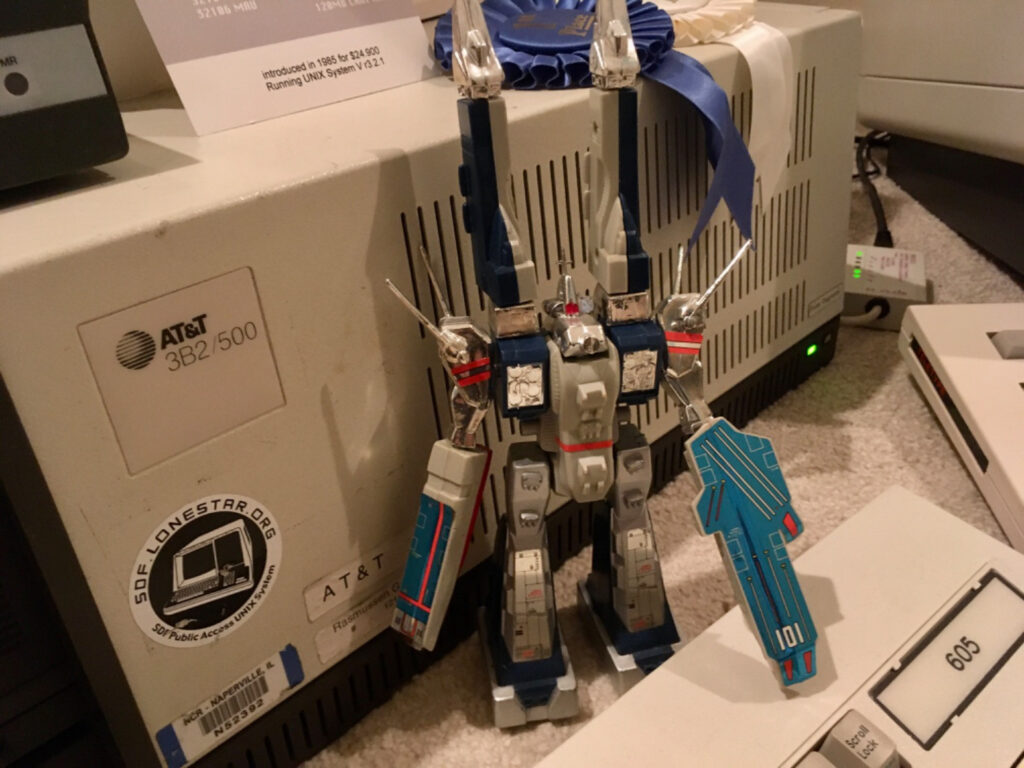

1998-1999
The AT&T 3B2/500 was permanently retired in 1998 and SDF moved from System V3.2.3 UNIX to Slackware Linux on i386. In the left hand upper shelf, you can see two USR Sporster 33.6kbps modems, the 3COM NT1/TA ISDN modem and the Fujitec/Adtran DSL (1.5mbps/768kbps). On the lower shelf is a UPS, an ethernet switch and two power strips. On the right hand side is the host “sdf” in the taller cabinet with the Exabyte drive and “sdf-2” (later renamed “otaku”) in the shorter case. These systems are likely Intel Pentium MMX 233MHz which came from a failed attempt to start a “Cyber Cafe” in Dallas Texas. NetBSD 1.2 was attempted to run on this setup, as well as GNU Hurd (believe it or not).
Storage Works
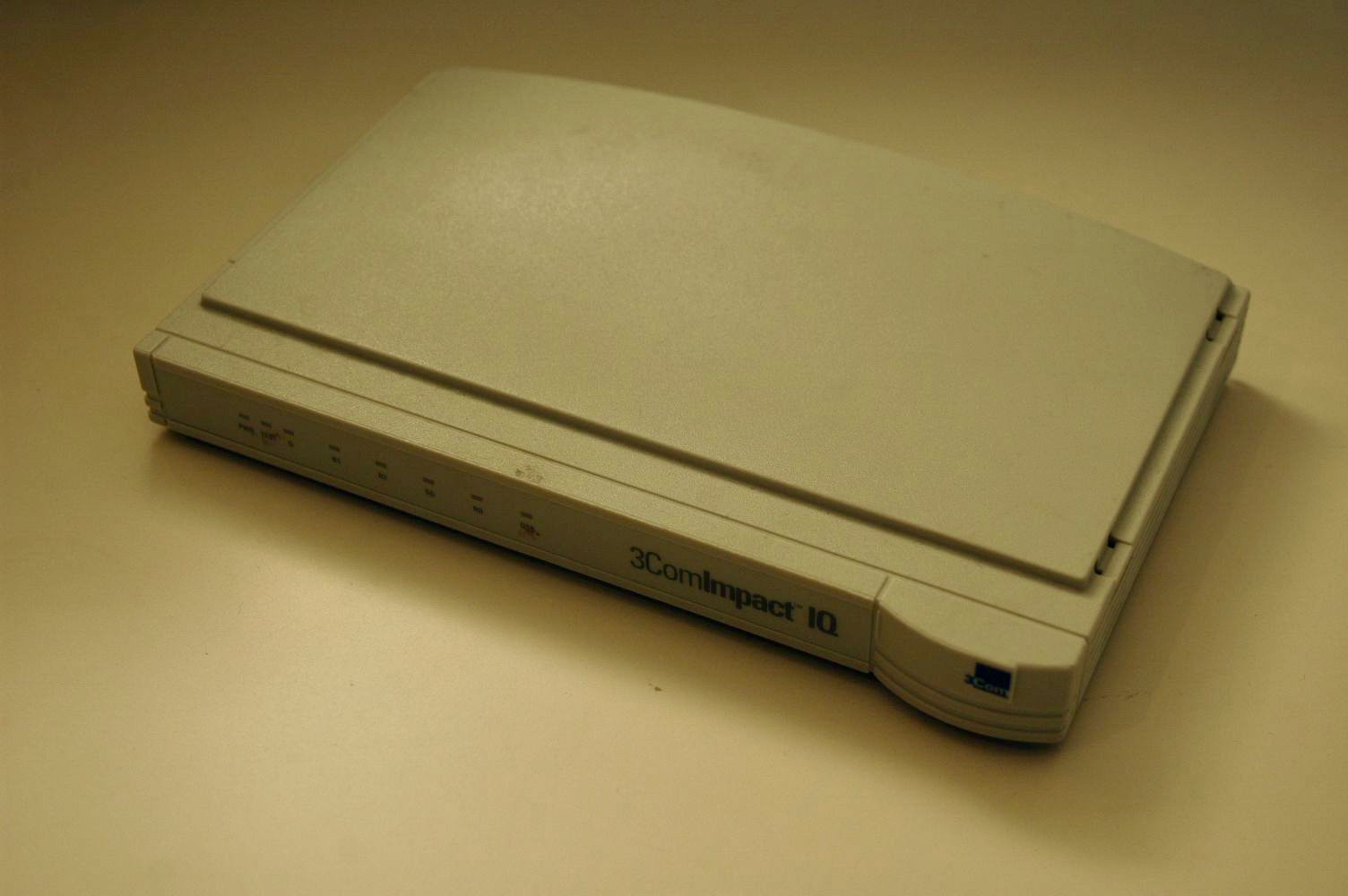

In 1994 Aaron Schmeidel (aaron) donated SDF’s first 3COM ISDN modem and 128kbps internet connection which was used until 1997. The modem and numbers were repurposed for analogue/digital dialup service using two 56kbps US Robotics modems. This modem and ISDN dialups were retired in 2000 and replaced by nationwide shared POP analogue/ISDN dialup service.
Original Disk Drives
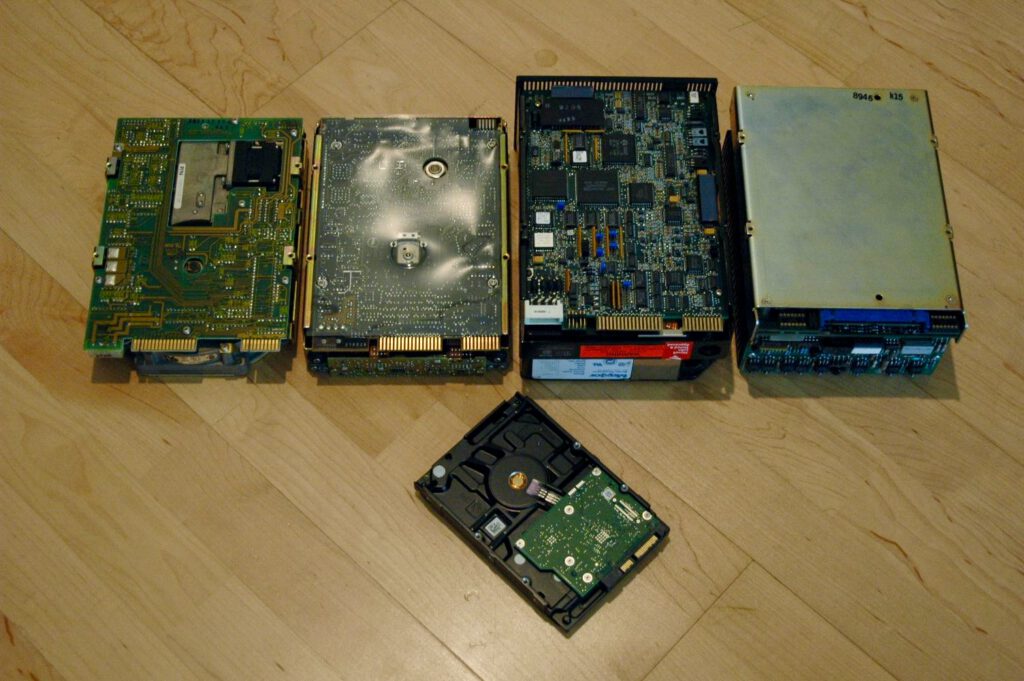

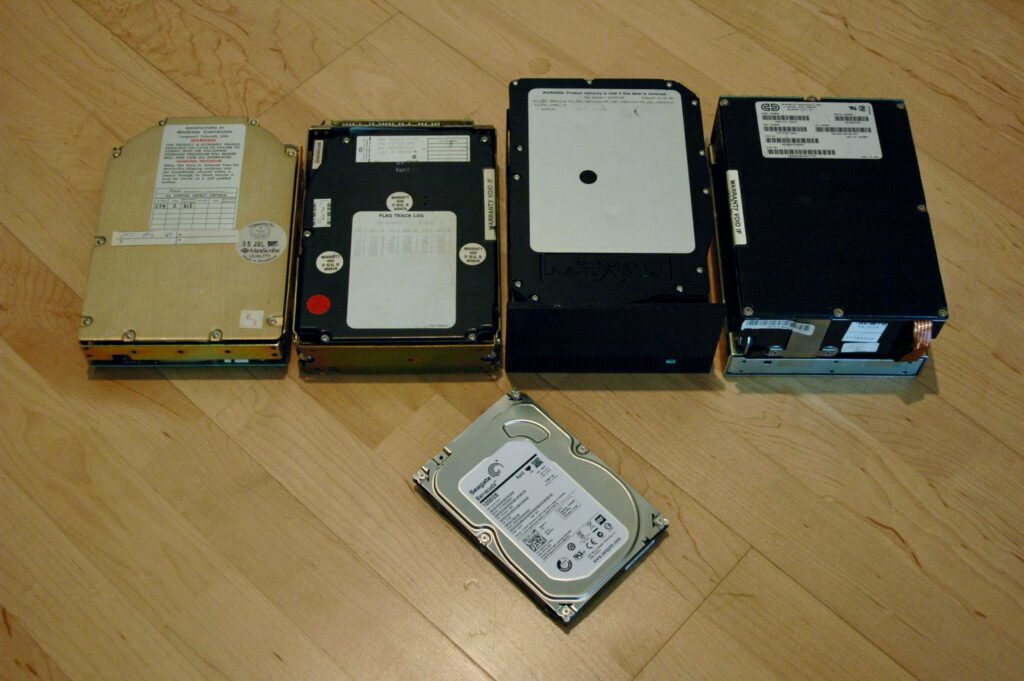
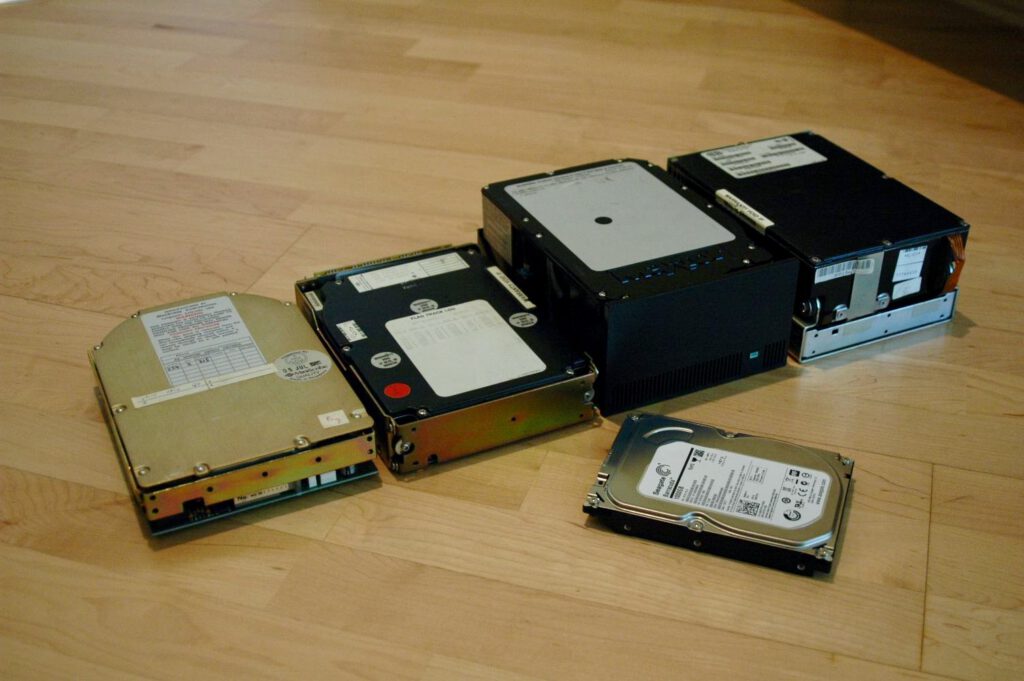
These are the original SDF Kodak Interactive 386/ix UNIX disk drives. In the left to right: Miniscribe 36MB, CDC/Micropolis 40MB, Maxtor XT1140 (137MB) and CDC 338MB disk (used in the 3B2). In the foreground is one of the “fleeting current technology” SATA type drives SDF uses today. This one happens to be 1TB and is already fit for recycle.

While many disks have been drilled or hydraulic pressed prior to recycling, there are still lots that have stuck around over the years.
